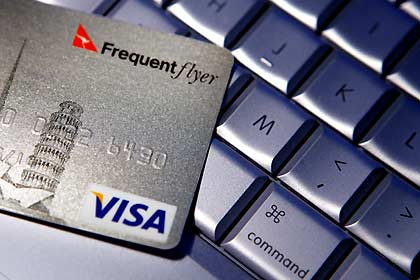Table of Contents
What is Frequency Marketing?
Frequency marketing, also known as loyalty programs, involves encouraging customers to make repeat purchases by enrolling them in a formal program that builds their loyalty and commitment to the brand.
All in all, it is a promotional strategy that rewards customers for the volume or frequency of their purchases or when they buy in larger quantities. The way to facilitate this is via discounting or other promotional activities such as giving rewards. The main objective of Frequency marketing is to get recurring sales and to increase customer loyalty.
As the company is encouraging repeat sales, more and more customers buy the products resulting in higher sales volume. This activity also increases the profit contribution of every individual customer.
For example, digital marketing campaigns, social media ad campaigns, and other marketing strategies can be used to target a niche audience that is potentially exposed to the brand’s messaging over a greater number of times within a set period. To prioritize reach, frequency capping is often employed to ensure that no user is served with a greater frequency of ads in too short a time frame. This is to ensure the right balance of exposure for consumers, while also optimizing the advertising budget and providing the desired results.
We can also apply the Pareto Principle to frequency marketing. Just focus on the top 20% of your customers who are driving 80% of your firm’s revenues and ensure they are buying repeatedly. This can be done via loyalty programs which help with customer retention and encourage repeat purchases.
Loyalty programs are another name for frequency marketing promotions. Here too the strategy is to keep the customer hooked on the products and services so that he or she keeps buying from the company. As per this study, an average US consumer is a part of 16 different Loyalty programs at any given point of time. Which proves that frequency marketing is very attractive to customers as well.
Advantages
Here are some advantages of frequency marketing
- Customer Retention – The loyalty programs ensure that there is high customer retention and low customer churn.
- Customer lifetime value – Because the customer is retained for a longer duration, there is a high customer lifetime value because of frequency marketing.
- Higher sales volume – You get higher sales volume because the same customers are buying higher quantities of products from you in a recurring fashion.
- Cost savings – Retaining a customer is much cheaper than acquiring new customers. Thus, a lot of costs are saved when using frequency marketing.
Disadvantages
- Customers will always expect freebies – Due to their very nature, customers will always expect freebies from the company and ask for the same to be retained by the company.
- Loss of customers if loyalty programs closed – There can be an immediate loss of existing customers if companies turn down a loyalty program, thereby opening up the market for the customer where another competitor can swoop in and acquire the loyalty of the customer.
Examples of Frequency Marketing
Frequent flier miles is an excellent example of Frequency Marketing. The more frequently you fly an airline, the more frequent flier miles you accumulate. You can then later exchange these miles for freebies such as free air travel or free onboard services. The services may include a free beverage or lunch, a free journey, upgrades to business class, or hotel books depending on your value to the airline.
Retail and E-commerce segments also work on frequency Marketing. Retailers like Walmart give various discounts for buying over a period of time. Alternatively, they may give a discount if your purchases cross a certain value. The famous Scratch and Win cards are also used in retail to generate excitement and delight customers.
Here is an excellent video and an example of how to use frequency marketing in a restaurant
https://www.facebook.com/watch/?v=774484613072659
Conclusion
When used correctly in a marketing campaign or ad campaign, Frequency marketing or Loyalty programs can be very useful to the company as they help the company focus on the most valuable customers – The ones who are already giving revenue to the company.
By understanding their target audience, and the right advertising frequency they need to see an ad or an advertising message to take action, companies can better understand the effective frequency of their campaigns. The right ad frequency will optimize the focus on repeat exposure which will ultimately maximize success.
Liked this post? Check out the complete series on Marketing
